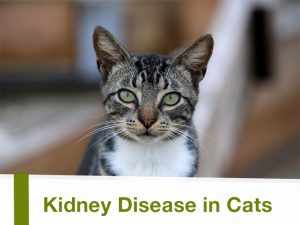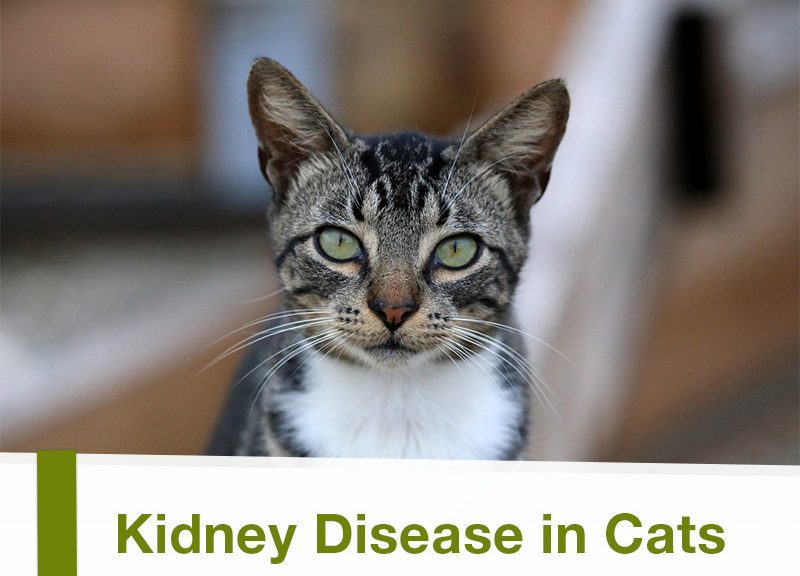
Just like us, cats have two kidneys and their main role is to filter the bloodstream and remove waste products produced by the body’s metabolism. These waste products are eliminated from the body in the urine. The kidneys also help to regulate the volume and composition of the blood.
Kidney disease is one of the most common problems in cats. This condition leads to the accumulation of toxic waste in the bloodstream, making the animal ill and perpetuating the kidney damage. Kidney disease can be acute or chronic. Acute kidney disease is a severe condition with a relatively sudden onset, most often days, in which the kidneys are suddenly unable to function properly, whereas chronic kidney disease is a disease that has been developing over the course of a longer period of time. The most common causes of acute kidney disease are the ingestion of toxic substances, like antifreeze, certain human medications and certain foods.
Chronic kidney disease is one of the most common conditions affecting older cats, from 7 years of age onwards. Two thirds or more of total kidney function must be lost before most cats show signs of disease. It is an ongoing, irreversible process that progresses over time.
Signs of chronic kidney disease include weight loss, poor appetite, lethargy, increased thirst and increased urination. As this disease advances, other signs may appear, such as sores in the mouth and bad breath produced by toxic levels of waste products, as well as vomiting and diarrhoea. If you notice these signs on your cat do not hesitate and take your pet to the vet!
Given prompt treatment acute kidney disease may be reversible. Unfortunately, chronic kidney disease cannot be reversed, but it can be managed, both increasing the quality of life of affected cats and potentially slowing down the progression of the disease.
Would you like to know more about cats? Check our Feline Courses:
